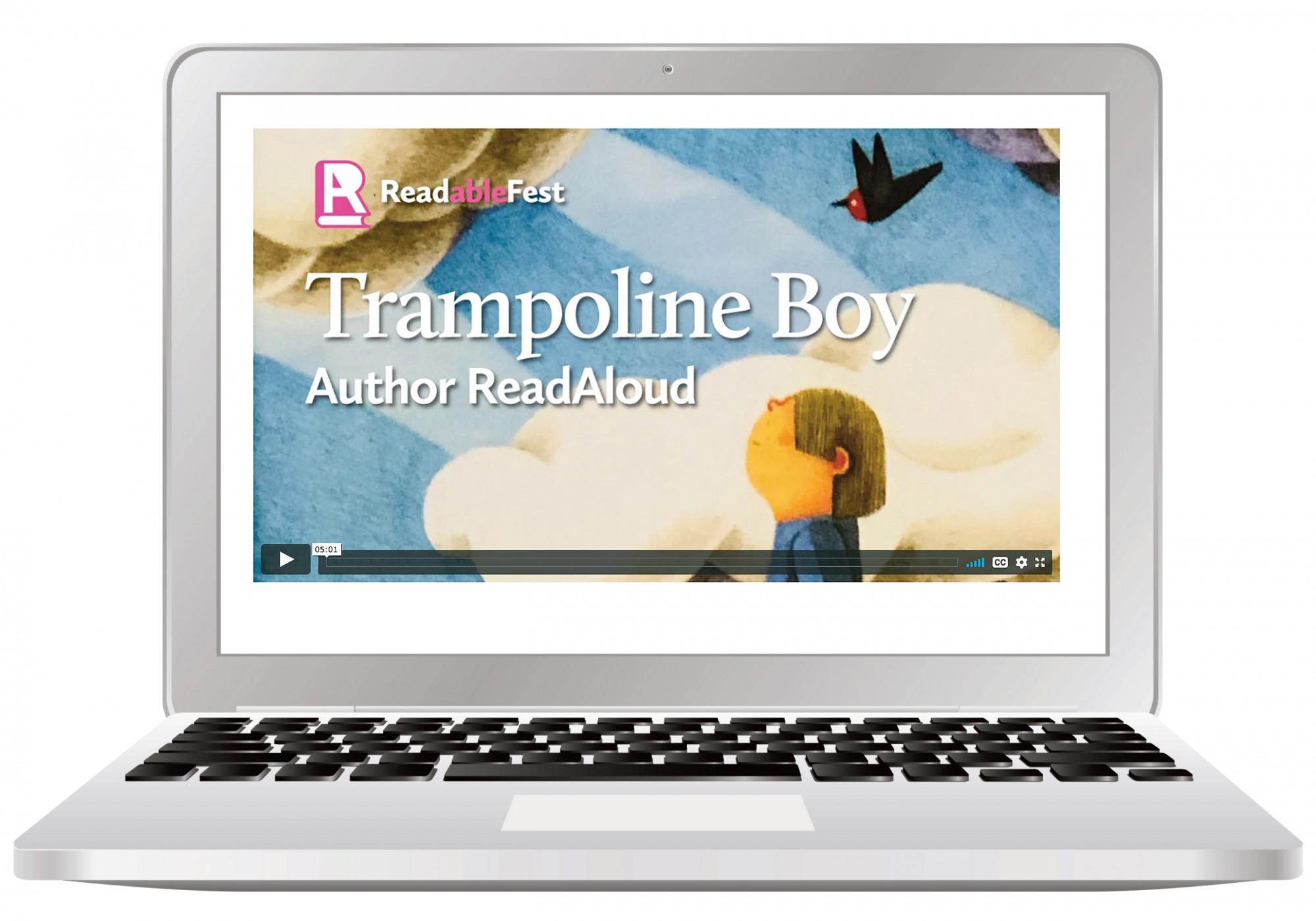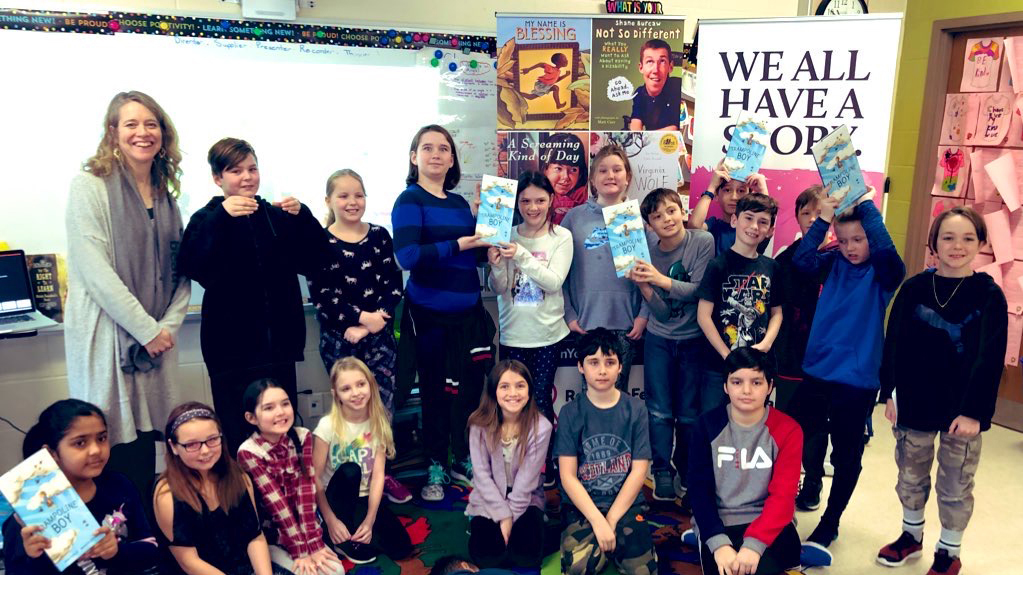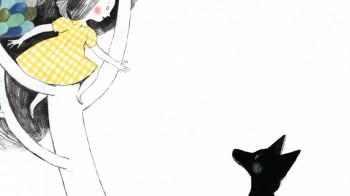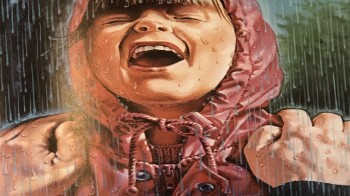Nan Forler's Trampoline Boy
We’d like to thank Nan Forler and Penguin Random House Canada for agreeing to share the author "read aloud" version of ReadableFest title, Trampoline Boy on our website.
Due to extended school closures, ReadableFest wanted to ensure the dialogue of improving inclusion and accessibility continued during emergency distance education lessons. Nan delighted listeners with her story, set to Marion Arbona's brilliant illustrations and a beautiful, customized soundtrack. We are excited about our goal to bring more ReadableFest stories to life as digital versions in the future.
Nan’s video was available until the end of June 2020.

Q&A with Nan Forler on writing and accessibility.

We might think that someone who acts different seems weird to us, but often that is because they think and see the world differently from us. When we realize that we all view the world in diverse ways, we can learn so much from each other.
What inspired you to write Trampoline Boy? Why is it important to you?
I started thinking about Trampoline Boy years ago. In my neighbourhood, I always saw the same boy bouncing on his trampoline and I loved that image. I wondered why he was always there bouncing, day and night. Books often start with a picture in my mind or a question. Eventually, a story that feels really important for me to tell starts to grow. For many children with autism, trampolines can help them let go of anxiety and stress, so the trampoline became the backdrop to the story.
This story felt very important to me. Sometimes people feel that some people are more important than others in the world. My goal was to show that every person has great value and we can all learn from each other and create a more beautiful world. As a mother, I know there can also a great deal of loneliness in disability and sometimes when we are caught up in our own life, we forget to notice the people who are alone. I wanted to write a story to show the deep friendship that is possible in a neurodiverse world.
How long did it take to write the book? Can you describe the process?
Jane Yolen, one of my favourite children’s authors, said it’s not how long it takes to write a book, it’s how long it takes to be able to write that book. Practising a skill over and over again is what helps you improve and become really good at something. My writing instructor used to say that you should write 100 books before you get one published. I probably have over 100 stories that I have written, but only 3 have become books, and another book will be coming out next year.
Even though this book is short, it actually took a very long time because I wrote and rewrote it over and over again. My editor and I wanted to make sure we got every word exactly right because in a short book, every word counts.
Usually, I write and rewrite a story, then I take it to my writer’s group and they give me feedback and I write and rewrite some more. Once I send it to my publisher, it takes about two years for a picture book to arrive in stores. The editor and I work on the words, then the illustrator and book designer plan the pictures and page set up, the illustrator creates the pictures, and finally it goes to printing and becomes a book. Throughout this time, the editor and designer are working on editing and making changes with the author and illustrator to balance it out and make the words and pictures come together in the best way to tell the story.
Trampoline Boy is illustrated by Marion Arbona. Do authors usually work directly with the illustrator? Did you imagine the pictures should convey something specific?
The author and illustrator usually do not talk to each other at all until the book is finished. Marion and I have never met! Our editor takes what each of us says and communicates between us. The publisher wants the author and the illustrator to each bring their own ideas to the story. The illustrator draws the sketches and then the editor and I go through to make sure the illustrations communicate the message of the story. The author wants to leave lots of room for the illustrator to be creative and express her own ideas and vision of the story too.
Did anything surprising happen throughout the creation of the book with Marion?
Marion and I had to work closely with our editor to make sure we were telling the same message. Because this was a story about a child with autism, we felt it was very important to send a message that would encourage acceptance. We didn’t want Trampoline’s Boy’s world in the sky to look scary. We wanted to get the words and illustrations on the last few pages exactly right. A child with autism is often able to see and notice so much more that others might miss. We wanted to make it filled with beautiful details in both the words and the pictures.
Many students are curious about characters in books. What is the significance of the name "Peaches"?
I was actually at a birthday party at a friend’s house years ago, and the little girl next door was named Peaches. This was not her real name, but now she is an adult and still calls herself Peaches! I keep a list in my phone with names I would like to use in a book someday.
What is the value of having stories like Trampoline Boy? What can we learn about acceptance and inclusion? What can we learn about ourselves?
Everything moves so quickly in life and sometimes we judge others without taking the time to really try to understand them. In this story, most children just thought Trampoline Boy was weird, but Peaches took the time to be patient, to listen, and to understand. If we only get to know people who look and act and think like ourselves, we miss out on so much. The world is much more interesting when we connect with people with different ideas.
Inclusion is so different than just talking to someone as a good deed. Inclusion is about reaching out and wanting to know someone on a deeper level. It’s about forming a friendship, regardless of challenges.
With Peaches and Trampoline Boy, I wanted to show a true connection and friendship. Peaches is patient and curious. She wants to get to know Trampoline Boy and experience some of his world and it makes life richer and more beautiful for both of them.
What do you hope students learn about Autism or other neuro-diverse conditions?
I hope that students will take the time to get to know someone who thinks or acts differently instead of judging them. We might think that someone who acts different seems weird to us, but often that is because they think and see the world differently from us. When we realize that we all view the world in diverse ways, we can learn so much from each other.
Greta Thunburg, the 17 year-old environmental activist, has a form of autism called Asperger’s Syndrome. She describes this as her superpower because she is able to think outside of the box and see things in ways that others may have never imagined. There is a theory that people with autism are very highly evolved because often they have greater focus on one thing and notice things others may not see. We all have diverse gifts and talents, and if we take the time to watch and listen and connect, we can make the world a better place.
It was such a thrill to have you visit classrooms during the ReadableFest Program. What’s one thing that comes to mind when you think back about your visits?
I remember coming home and feeling so full of energy, even after a long day of travelling and school visits. So many students shared such beautiful insights and thoughts about the story. When you write a story, you have your own ideas about it, but once you send it out into the world, the story takes on a new life with students who have different experiences they bring to their reading, and new and very deep ideas and thoughts. I loved the questions and comments from each class. They really made me think about the story and about inclusion in new ways too.
Also, isn’t Sonya great? I was very inspired by her energy and passion to share this very important message of inclusion and acceptance. The enthusiasm of Sonya and everyone I met in the schools was contagious! I really think that this is a movement that can make lasting and positive change!
We can’t wait for the ReadableFest program to continue. We hope you’ll join us again.
I would love to be a part of Readable Fest again! Inclusion and literacy are two of my greatest passions. The way that students are the leaders in making change is so inspiring! The decisions you make now to encourage inclusion will make a huge difference in our world.
Other Stories
The Other Stories hub on this website features many interesting short videos that tie directly to the ReadableFest titles. This will allow you to continue the dialogue you were having with students before the March Break and provide you with some distance education activity ideas.
Resources
Visit the Resources hub. Click on a lesson plan in the For Teachers section. A number of suggested Other Stories are mentioned in the "Follow-Up Activities" section of each lesson plan. Be sure to check back here as we post more ideas and resources.








